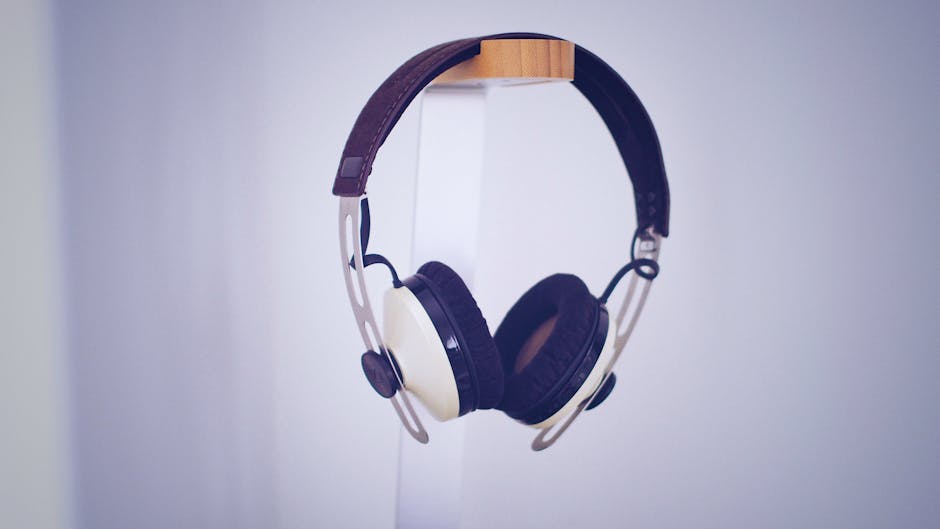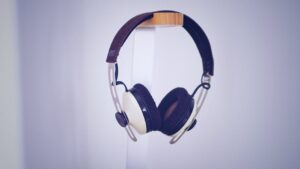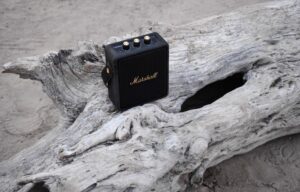Cheap Audiophile Headphones: 10 Best Amazing Picks 2025
The Affordable Audiophile Revolution
Cheap audiophile headphones are more accessible than ever in 2024. If you’re looking for high-quality sound without breaking the bank, here are the top budget audiophile headphones by price range:
| Price Range | Top Picks |
|---|---|
| Under $50 | Koss Porta Pro, Superlux HD681, Samson SR850 |
| Under $100 | Grado SR60x, Philips SHP9600, Sony MDR-7506 |
| Under $200 | Sennheiser HD6XX (Drop), Beyerdynamic DT770 Pro, AKG K702 |
| Under $500 | HiFiMan HE400se, HiFiMan Edition XS, Beyerdynamic DT900 X |
The world of high-fidelity audio has long been associated with eye-watering price tags and exclusive gear. But here’s the truth: amazing sound quality doesn’t have to empty your wallet.
Thanks to manufacturing advances and the rise of Chinese HiFi (or “ChiFi”) brands, the gap between budget and premium headphones has shrunk dramatically. Today’s affordable options deliver performance that would have cost hundreds more just a few years ago.
What makes this possible? Economies of scale, innovative materials, and direct-to-consumer sales models have all contributed to this audio democratization. As one audio expert noted, “The law of diminishing returns hits hard after $300 in headphones.”
Whether you’re a curious newcomer or a seasoned listener working with limited funds, this guide will help you steer the best budget-friendly options that deliver genuine audiophile-grade performance.

Basic cheap audiophile headphones glossary:
– best earphone for audiophile
– best headphones for audiophiles under 100
What Makes an Audiophile Headphone (and Why Price Isn’t Everything)
Ever wondered what makes a pair of headphones truly “audiophile”? It’s not the fancy packaging or the eye-watering price tag. At its heart, audiophile headphones aim to reproduce music exactly as it was recorded – no artificial bass boost, no overhyped treble, just pure musical truth.
The hallmarks of audiophile sound include a neutral sound signature that balances all frequencies naturally, a wide soundstage that creates a sense of space around instruments, low distortion for clean reproduction, accurate timbre that makes voices and instruments sound true to life, and detailed resolution that reveals all the subtle nuances in your favorite recordings.
Here’s the surprising truth that the high-end audio industry doesn’t want you to know: you don’t need to spend a fortune to experience these qualities. While those $1,500 headphones might use exotic materials and artisanal craftsmanship, the actual improvement in sound quality often follows the law of diminishing returns.
RTINGS has tested over 780 headphone models, and their data reveals something fascinating – some cheap audiophile headphones score remarkably close to flagship models in neutral sound performance. That $150 pair might deliver 90% of the audio quality of its $1,500 counterpart.
The Science Behind “Audiophile Sound”
Let’s explain what makes headphones sound good without drowning in technical jargon.
Frequency response is simply how evenly headphones reproduce different sound frequencies. The best ones follow what audio scientists call the “Harman curve,” which matches human hearing preferences. Budget heroes like the Superlux HD681 achieve surprisingly flat responses that rival much pricier options.
Harmonic distortion happens when headphones add unwanted sounds to the original signal – think of it as audio impurities. Many affordable planar magnetic headphones like the HiFiMan HE400se offer exceptionally low distortion levels that keep your music clean and pure.
Transient response refers to how quickly drivers can start and stop moving, affecting detail and clarity. This is where driver technology makes a big difference in how precisely you hear music.
According to research published in the Journal of the Audio Engineering Society, our perception of headphone sound quality is significantly influenced by frequency response more than any other technical factor.

Speaking of drivers, audiophile headphones typically use one of two main technologies:
Dynamic drivers are the traditional cone-shaped drivers found in most headphones. They’re efficient, deliver punchy bass, and can sound excellent when well-designed. The beloved Sennheiser HD6XX uses refined dynamic drivers to deliver its legendary midrange that makes vocals sound incredibly lifelike.
Planar magnetic drivers use a thin diaphragm suspended between magnets, offering lower distortion and more accurate bass. Once found only in premium headphones costing hundreds or thousands, they’re now available in affordable options like the HiFiMan HE400se, bringing previously exclusive technology to budget-conscious listeners.
Cheap Does Not Mean Cheap-Sounding
The golden age of cheap audiophile headphones is here, and several factors have made this possible.
Smart companies like HiFiMan, Grado, and Philips have mastered the art of value engineering – focusing their budget on the components that most impact sound quality while saving on non-essentials. They might use simple packaging or basic cables, but they never compromise on the drivers and tuning that determine what you actually hear.
The rise of Chinese audio manufacturers (often called “ChiFi”) has completely transformed the budget audio landscape. Far from the low-quality knockoffs of yesteryear, today’s Chinese audio brands create innovative, high-performance designs at prices that were previously unimaginable. As one industry expert put it, “Chinese HiFi manufacturers can offer audiophile-grade performance at sub-$50 prices due to low production and design costs.”
Manufacturing efficiency plays a huge role too. Economies of scale have helped established brands like Sony and Audio-Technica maintain professional-grade models at accessible prices for decades. The Sony MDR-7506, a studio staple since the 1990s, still delivers reference-quality sound at under $100.
The audiophile community deserves credit for identifying exceptional values through rigorous testing and comparison. Models like the Koss Porta Pro have remained virtually unchanged for over 30 years because they continue to outperform their modest price point. These community favorites often become legends in their own right, proving that great sound doesn’t require a second mortgage.
The Best Cheap Audiophile Headphones of 2024

Let’s explore the audio treasures I’ve finded in my quest for cheap audiophile headphones. After countless hours of testing and research, I’ve assembled a collection that proves exceptional sound doesn’t require emptying your wallet. Whether you have $30 or $500 to spend, there’s something here that will make your music shine.
Under $50 Champions – cheap audiophile headphones for true penny-pinchers
Even with a tight budget, you can experience genuine audiophile sound that will make you question everything you thought you knew about affordable audio.
The Koss Porta Pro ($30-40) has been defying expectations for over three decades with its warm, rich bass and clear midrange. Despite its retro look (or perhaps because of it), these lightweight on-ears continue to outperform headphones costing two or three times more. For about $12 extra, Yaxi ear pads transform both comfort and slightly improve the soundstage – a worthy upgrade for these portable classics.
If you’re curious about the open-back experience, the Superlux HD681 ($30-40) delivers a surprisingly wide soundstage with a V-shaped sound signature that emphasizes both bass and treble. RTINGS wasn’t exaggerating when they called it “the best budget audiophile headphone” – the spaciousness and detail you’ll hear simply shouldn’t be possible at this price point. Consider swapping the stock pads for velour alternatives if comfort becomes an issue during longer sessions.
For home studio enthusiasts, the Samson SR850 ($40-50) offers a neutral-bright signature with excellent detail and imaging. Its semi-open design strikes a nice balance between soundstage width and isolation. Many listeners compare it favorably to the AKG K240, despite costing only a third as much. These are particularly well-suited for detail-oriented listening or budget mixing projects.
Sweet Spot Under $100 – cheap audiophile headphones that punch above weight
The $50-100 range might just be the sweet spot in the entire headphone market, where value peaks before diminishing returns kick in.
Handcrafted in Brooklyn, the Grado SR60x ($99) brings audiophile craftsmanship to an accessible price point. With its forward mids, detailed highs, and controlled bass, these open-backs shine with rock, acoustic, and vocal-centric music. The 4th-generation drivers deliver reduced distortion and improved harmonic integrity compared to previous models. Just remember that the open design means sound travels both ways – these are strictly home listening headphones.
For all-day comfort with excellent sound, the Philips SHP9600 ($80-100) offers a balanced, slightly warm signature with good bass extension and smooth treble. I particularly appreciate how easy these are to drive from phones and laptops, making them versatile companions for various listening scenarios. The improved build quality over the previous SHP9500 model makes these even more compelling for long-term use.
The Sony MDR-7506 ($80-100) has been an industry standard for over 30 years for good reason. Its neutral-bright signature and revealing character have made it a staple in recording studios worldwide. As one engineer told me, “When the world ends, all that will be left is cockroaches and the Sony MDR-7506.” The coiled cable and folding design add unexpected portability to these professional monitors.
For more detailed comparisons of headphones in this price bracket, check out our best headphones for audiophiles under 100 guide.
Mid-Fi Magic Under $200 – cheap audiophile headphones for serious listeners
Between $100-200 is where many enthusiasts find their “endgame” headphones – models so satisfying that the upgrade itch finally subsides.
The Sennheiser HD6XX (Drop) ($180-220) is essentially identical to the legendary HD650 at nearly half the price – a genuine audiophile bargain. Its neutral-warm signature with exceptional midrange reproduction and natural timbre makes vocals and acoustic instruments sound incredibly lifelike. While these benefit from proper amplification, better dongles and phones can drive them adequately. I’ve seen countless audiophiles settle on these as their daily drivers despite owning much more expensive alternatives.
For environments where isolation matters, the Beyerdynamic DT770 Pro ($150-180) combines tank-like build quality with a V-shaped sound signature featuring extended bass and treble. Available in different impedances (32, 80, 250 ohms), you can choose the version that best matches your equipment. The velour pads and solid construction make these comfortable for extended sessions, whether you’re producing electronic music or immersed in gaming.
Classical and jazz enthusiasts should consider the AKG K702 ($140-180), which offers reference-level soundstage width and imaging at a mid-range price. Its neutral-bright signature excels at recreating the sense of space in well-recorded acoustic music. As one reviewer colorfully noted, these are “best enjoyed with a glass of scotch and a turtleneck for jazz passages” – a testament to their refined presentation. Just be aware they do need decent amplification to sound their best.
Stepping Into Hi-Fi Under $500 – nearly endgame cheap audiophile headphones
At the upper end of what I’d still call “budget audiophile,” these headphones compete directly with models costing significantly more.
The HiFiMan HE400se ($150) represents a breakthrough in affordable planar magnetic technology. Its neutral signature with excellent detail, extended bass, and clean treble makes it versatile for all genres. While relatively easy to drive for a planar, it still benefits from amplification to reach its full potential. Many enthusiasts now consider it to have “dethroned the HD6XX for timbre and resolution” at a similar price point – high praise indeed.
If you can stretch your budget further, the HiFiMan Edition XS ($350-500) delivers what many consider 80-90% of kilobuck flagship performance. Its neutral-bright signature with exceptional detail, expansive soundstage, and extended bass provides a taste of true high-end audio. The improved headband design addresses comfort issues from earlier models, making this a compelling option for discerning listeners seeking maximum performance per dollar.
For those who prefer a more analytical sound, the Beyerdynamic DT900 X ($250-300) modernizes a classic with improved comfort and a detachable cable. Its neutral signature with slightly emphasized treble and excellent imaging makes it ideal for detail-oriented listening and studio applications. The increased efficiency compared to previous models means it’s easier to drive from portable devices – a welcome improvement to an already excellent design.
Performance & Trade-Offs Explained
Let’s talk about what you’re really getting when you invest in cheap audiophile headphones – and where the inevitable compromises happen. Understanding these trade-offs helps set realistic expectations when you’re shopping on a budget.
Sound quality is where budget models can truly shine. Many affordable headphones deliver excellent tonal balance and impressive detail retrieval that would have cost hundreds more just a few years ago. While they might not capture the ultimate refinement or microscopic details of $1000+ flagships, the gap is often surprisingly small. As one reviewer put it, “The law of diminishing returns hits hard after about $300.”
Comfort is another consideration when shopping for budget cans. Less expensive models typically use simpler padding materials and more basic headband designs. However, don’t assume cheap means uncomfortable – the Philips SHP9600 proves that excellent all-day comfort is absolutely possible without breaking the bank. Many budget favorites can be worn for hours without fatigue.
Build quality is typically where you’ll notice the most obvious cost-cutting. Expect more plastic components, simpler hinges, and fewer premium materials like metal and leather. That said, durability doesn’t necessarily suffer – just look at the Sony MDR-7506, a largely plastic headphone that has survived decades of professional abuse in studios worldwide.
Isolation varies significantly based on design. Budget closed-backs generally offer decent noise blocking, though they won’t match the sophisticated passive or active noise cancellation of premium models. For many home listeners, this trade-off is perfectly acceptable.
Portability features like folding designs, detachable cables, and carrying cases become more common as price increases. Budget models often simplify these elements, focusing investment on sound quality instead.
A 2022 study published in the International Journal of Acoustics and Vibration found that even budget headphones can achieve excellent frequency response when properly designed, though they may show more unit-to-unit variation than premium models.

Open-Back vs Closed-Back vs Semi-Open
The way headphones are designed – particularly how the ear cups are constructed – dramatically impacts your listening experience. Let’s break down the differences:
Open-Back Headphones let air (and sound) flow freely through the back of the ear cups. This design creates a more spacious, natural soundstage that many audiophiles adore. Models like the Philips SHP9600, Grado SR60x, and Sennheiser HD6XX excel here, making music sound like it’s happening around you rather than inside your head. The downside? Everyone nearby can hear what you’re listening to, and external noise flows right in. Save these for quiet home environments.
Closed-Back Headphones seal off the ear cups, containing sound and blocking external noise. This design typically delivers punchier bass and makes these headphones usable in public spaces. The Sony MDR-7506, Beyerdynamic DT770 Pro, and Audio-Technica M40x are stellar budget examples. The trade-off is a somewhat smaller soundstage – music tends to feel more “in your head” than with open designs.
Semi-Open Headphones attempt to strike a balance, offering better soundstage than closed models while leaking less sound than fully open designs. The Superlux HD681 and Samson SR850 demonstrate this approach at budget-friendly prices. They’re a nice compromise for home environments where some awareness of your surroundings is helpful.
As one forum user beautifully explained: “Open-back headphones create a large, natural soundstage and more realistic spatial imaging, making audio appear to come from outside your head – it’s like having tiny speakers near your ears rather than earplugs.”
Planar Magnetic vs Dynamic Drivers – cheap audiophile headphones showdown
The technology inside your headphones fundamentally shapes how they sound. Most headphones use one of two main driver types:
| Aspect | Planar Magnetic | Dynamic |
|---|---|---|
| Detail Retrieval | Generally superior | Good but typically less precise |
| Bass Response | Extended, flat, textured | Can be punchier, more impact |
| Efficiency | Less efficient, often needs amplification | More efficient, easier to drive |
| Distortion | Typically lower | Varies by model |
| Budget Examples | HiFiMan HE400se, Edition XS | Sennheiser HD6XX, Grado SR60x |
Planar magnetic drivers use a thin diaphragm suspended between magnets, creating more uniform movement. This typically results in lower distortion, more textured bass, and better detail retrieval. The HiFiMan HE400se demonstrates how accessible this technology has become, delivering a level of detail and bass texture that similarly priced dynamic drivers struggle to match.
Dynamic drivers, the more common technology, use a coil attached to a cone-shaped diaphragm. They’re generally more efficient (easier to power) and can deliver excellent punch and impact, particularly in the bass. The Sennheiser HD6XX’s dynamic drivers showcase the technology at its best, with a midrange presentation that remains a benchmark.
As one audio engineer explained: “Planar magnetic drivers distribute force more evenly across the diaphragm, leading to faster response times and lower distortion. They often sound more detailed and revealing, though they can be brighter and typically need more power to perform their best.”
When (and When Not) to Add an Amp or DAC
A common question when buying cheap audiophile headphones is whether you need additional equipment to make them shine. Here’s a straightforward guide:
You probably need an amplifier when your headphones have high impedance (over 80 ohms), low sensitivity (under 95 dB/mW), or when you’re not getting adequate volume from your source. If your music sounds flat, lacks dynamics, or the bass seems weak, an amp might help open up your headphones’ potential.
A dedicated DAC (Digital-to-Analog Converter) makes sense when your source device has audible interference or noise, you’re using a computer with poor onboard audio, or you want to access higher-resolution audio formats. Many people find that even affordable DACs provide cleaner, more detailed sound than built-in solutions.
Budget-friendly options have exploded in recent years. Simple USB-C or Lightning dongles ($10-50) often include decent DAC/amp combinations. Portable solutions like the FiiO K3, iFi Hip DAC, or Qudelix 5K ($50-150) offer more power and features. For desktop setups, the JDS Labs Atom, FiiO K5 Pro, or Schiit Fulla ($100-200) provide excellent performance without breaking the bank.
“Don’t underestimate those little USB-C dongles,” one audio enthusiast pointed out. “They bypass your phone’s internal circuitry completely, often delivering cleaner bass and improved overall sound quality compared to built-in headphone jacks.” For many budget headphones, these affordable adapters provide all the improvement you’ll need.
Buying Tips, Accessories & Safe Shopping

Your journey with cheap audiophile headphones doesn’t end after hitting the “buy” button. In fact, the right accessories and shopping strategies can transform a good listening experience into a great one.
Think of your headphones as the foundation of your audio experience – but the house you build on top makes all the difference. A quality headphone stand might seem like an unnecessary luxury, but it actually protects your investment and extends its lifespan. Similarly, replacement pads aren’t just about comfort (though they absolutely improve that) – they can subtly alter sound signature and breathe new life into aging cans.
For those with compatible equipment, balanced cables can offer improvements in clarity and soundstage, while simple extension cables provide the freedom to move around without yanking your precious headphones off your desk. The best part? Many of these accessories cost a fraction of what you’d spend upgrading to a new pair.
Smart shoppers know timing is everything. Last year’s flagship model often gets substantial discounts when the new version launches – despite offering nearly identical performance. Open-box and certified refurbished options from reputable sellers can save you 15-30% with minimal risk. And don’t underestimate the power of community knowledge – audiophile forums frequently spotlight hidden gems before they hit mainstream awareness.
Stretching Value With Pads, Cables & Easy Mods
The beauty of the cheap audiophile headphone world is how much performance you can open up through simple, affordable tweaks.
Those legendary $35 Koss Porta Pros? Add $12 Yaxi pads and suddenly they’re not just more comfortable – they gain a touch more soundstage and richness that makes them compete with $100+ headphones. It’s like magic, but it’s just smart value engineering.
The scratchy stock pads on your Superlux or Samson cans can be transformed with velour replacements that make all-day listening sessions a pleasure rather than a pain. As one user described it: “It’s like going from sitting on a wooden bench to sinking into a plush sofa – and the sound actually improves too.”
For models with detachable cables, upgrading to a better-quality cable (especially balanced ones for compatible setups) can reveal subtle details you didn’t know were hiding in your favorite tracks. Even simple changes like switching to a shorter cable for desktop use eliminates that annoying tangle of excess wire constantly catching on everything.
The most dedicated budget audiophiles explore simple modifications that tune frequency response and reduce unwanted resonances. A bit of carefully placed foam inside ear cups can tame harsh treble, while dampening materials applied to plastic housings can reduce unwanted vibrations. Some even add extra padding to headbands for models that tend to create “hot spots” during long sessions.
Where to Buy and How to Avoid Fakes
The rising popularity of cheap audiophile headphones has unfortunately attracted counterfeiters hoping to cash in on uninformed buyers. Protecting yourself starts with knowing where to shop.
Manufacturer direct websites are always your safest bet, though they rarely offer discounts. Established electronics retailers like Amazon (when sold directly by Amazon, not third parties), B&H Photo, and Sweetwater maintain strict quality control. For specialty audio gear, dedicated online shops like Headphones.com have built their reputation on authenticity and customer service.
When shopping, trust your instincts about deals that seem too good to be true – they usually are. A legitimate 20% discount during holiday sales is reasonable, but an 80% markdown on a current model should set alarm bells ringing. Examine packaging carefully when your purchase arrives – counterfeiters often skimp on print quality, and authentic products typically include serial numbers and clear manufacturer information.
The return policy is your safety net. Reputable sellers offer at least 14 days (though 30 is standard among better retailers) to evaluate your purchase. Before ordering, check if restocking fees apply and verify the warranty coverage. Pro tip: save all packaging until you’re completely satisfied with your purchase – many returns are rejected due to missing accessories or damaged boxes.
For deeper guidance on finding the perfect headphones for your specific listening habits and needs, our comprehensive guide on how to choose the right headphones for your needs walks you through every consideration from comfort to sound signature preferences.
Frequently Asked Questions about Budget Hi-Fi
Do cheap audiophile headphones need an external amp?
This might be the most common question I hear from newcomers to the audiophile world. The truth is, it really depends on your specific headphones.
Two key specifications determine whether your cheap audiophile headphones need amplification:
Impedance (measured in ohms) tells you how much electrical resistance the headphones have. Higher numbers (generally above 80Ω) typically benefit more from a dedicated amplifier to sound their best.
Sensitivity (measured in dB/mW) indicates how efficiently headphones convert power into volume. Lower numbers (below 95 dB/mW) mean the headphones are harder to drive and might sound thin or lacking dynamics without proper amplification.
Many budget-friendly headphones work beautifully straight out of your phone or laptop. The Philips SHP9600 (32Ω, 101 dB/mW), Grado SR60x (38Ω, 98 dB/mW), and the classic Koss Porta Pro (60Ω, 101 dB/mW) all deliver great sound without extra equipment.
On the flip side, models like the Sennheiser HD6XX (300Ω, 103 dB/mW), Beyerdynamic DT770 Pro in its 250Ω version, and most HiFiMan planar magnetic headphones really come alive with proper amplification.
Not ready to invest in a separate amp? Consider a USB DAC/amp dongle instead. As one of our readers shared: “Modern phones with built-in high-resolution DACs may drive many audiophile headphones without an external DAC. Even inexpensive USB-C/Lightning adapters can act as DAC/amp dongles and improve bass clarity.”
What’s the main trade-off versus $1,000 flagships?
Let’s be real – there’s a reason some headphones cost $1,000+, but the differences might be smaller than you think.
When comparing cheap audiophile headphones to their premium counterparts, several differences stand out:
Materials and Build Quality is often the most obvious distinction. Flagship models feature luxury materials like carbon fiber, machined aluminum, lambskin leather, and precision-milled components. Budget models typically use more plastic and simpler construction.
Micro-Detail Retrieval is where higher-end models often excel. While budget models can sound remarkably good, flagship headphones typically reveal more subtle details, textural nuances, and spatial cues in your favorite recordings.
Overall Refinement tends to be more polished in premium models, presenting a more coherent, seamless sound with fewer peaks or dips in frequency response.
Manufacturing Consistency is typically tighter on premium models, ensuring each pair sounds nearly identical – important for professional applications.
Here’s the good news though: the law of diminishing returns hits hard in the headphone world. A $300 model might deliver 80-90% of the sound quality of a $1,000 model, making budget options incredibly compelling for most listeners. Unless you’re a professional or serious enthusiast, you might never miss what you’re not hearing.
Are open-back models unusable outdoors?
While not completely unusable outdoors, open-back headphones definitely face significant challenges outside your home:
Sound Leakage is the biggest issue. Open-backs leak sound in both directions by design. At normal listening volumes, people nearby will hear your music (potentially embarrassing!), and you’ll hear all the environmental noise around you.
Sound Quality Compromise is inevitable. The carefully tuned acoustics of open-back designs depend on a quiet environment. Wind, traffic, and ambient noise mask the very details these headphones are designed to reveal, defeating their purpose.
Weather Vulnerability is another concern. Most open-back designs expose the drivers to the elements, making them susceptible to moisture damage from rain or even excessive humidity.
For outdoor trips, I recommend:
* Closed-back models like the Sony MDR-7506 or Beyerdynamic DT770 Pro
* IEMs (in-ear monitors) for maximum portability and isolation
* Semi-open designs like the Superlux HD681 as a compromise option in quieter outdoor settings
As one of our reviewers colorfully put it: “Open-back headphones are designed for quiet environments where you can appreciate their soundstage advantages. Using them on a bus or train defeats their purpose and annoys fellow passengers.”
Think of open-backs like convertible cars – absolutely wonderful in the right conditions, but not your first choice in a rainstorm or on a noisy highway.
Conclusion
The world of cheap audiophile headphones has never been more exciting. What once required a small fortune is now within reach for almost anyone with a passion for great sound. Thanks to manufacturing advances, increased competition, and the incredible ChiFi revolution, truly impressive audio quality is now available at every price point.
I’ve spent countless hours testing these budget gems, and here’s what I’ve learned along the way:
First and foremost, let your music preferences guide your choice. If you love bass-heavy genres like hip-hop or EDM, you’ll likely fall in love with the warm thump of the Koss Porta Pro or the controlled power of Beyerdynamic’s DT770. On the other hand, if vocal performances and acoustic instruments make up your playlist, the legendary midrange of the Sennheiser HD6XX or the intimate presentation of Grado’s SR60x will bring those recordings to life in ways you never imagined possible.
Your listening environment matters just as much as your musical taste. Those beautiful open-back Philips SHP9600s create a spacious soundstage that makes music feel alive – but they’ll be wasted on your daily commute where external noise drowns out their subtle details (not to mention annoying your fellow passengers!). For versatility across different settings, closed-backs like the industry-standard Sony MDR-7506 will serve you faithfully.
Be honest with yourself about amplification. While it’s tempting to dive straight into high-impedance headphones like the HD6XX, they won’t sound their best without proper power. If you’re not ready to invest in separate equipment, either choose more efficient headphones or consider an affordable dongle DAC/amp – many under $50 can make a meaningful difference.
Perhaps most importantly, audio is a journey, not a destination. Some of the most passionate audiophiles I know find more joy in exploring different sound signatures than chasing the absolute “best” (which doesn’t really exist anyway). Each headphone offers a unique perspective on your favorite music – sometimes it’s more fun to have several affordable options than one expensive pair.
At TheTechieGenius.com, we firmly believe everyone deserves access to great audio experiences regardless of budget. The models highlighted throughout this guide prove that exceptional sound quality has never been more accessible. The gap between budget and premium options continues to narrow, with today’s $200 headphones often rivaling yesterday’s $1000 flagships.
Have you tried any of these cheap audiophile headphones? Do you have a favorite budget model we missed? We’d love to hear about your experiences in the comments!
For more audio guides and expert tech advice, check out our audio section for in-depth reviews and tutorials that will help you get the most from your gear, whatever your budget might be.







